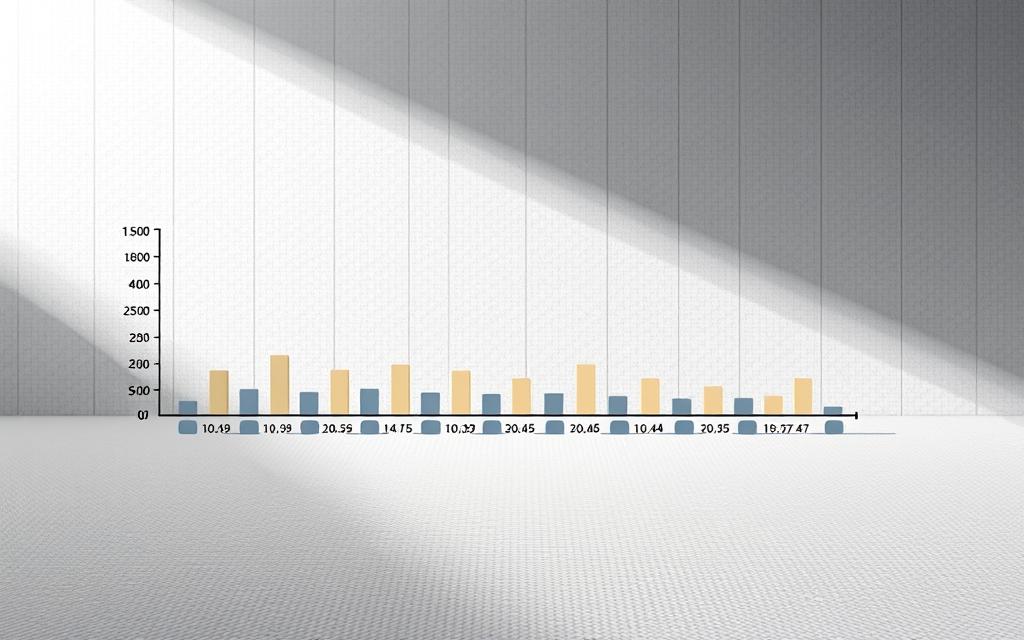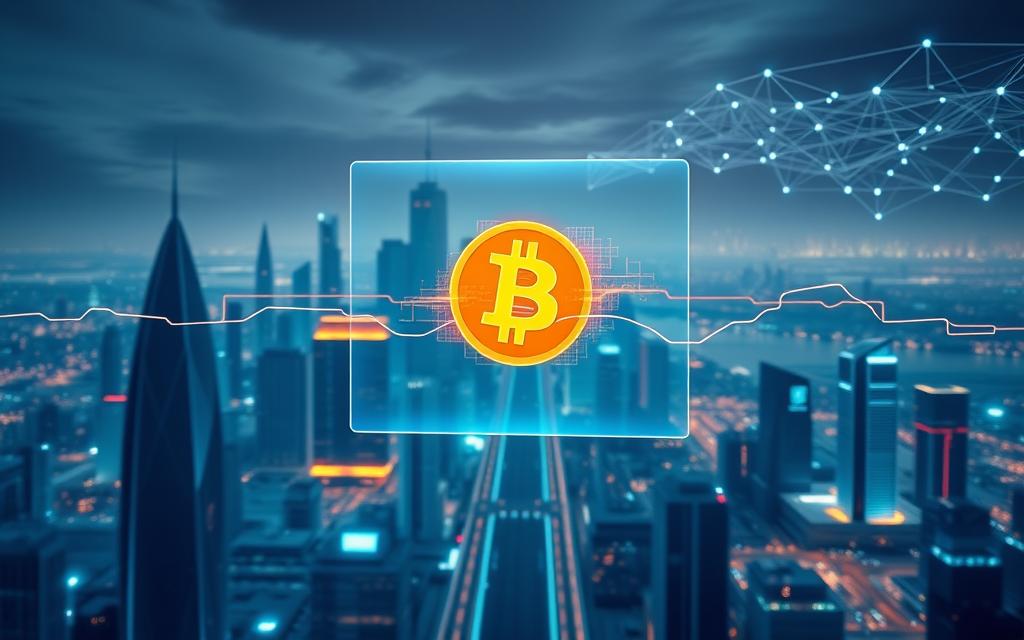Table of Contents
Bitcoin transactions don’t happen instantly; they require confirmation on the blockchain. The time it takes for a bitcoin transaction to be confirmed can vary significantly, from a few minutes to several hours or even days, depending on network congestion.
The transaction process involves multiple confirmations to ensure the transfer is secure and irreversible. Miners play a crucial role in this process by validating transactions and creating new blocks. Understanding the factors that affect transaction times can help users optimize their experience.
This article will delve into the mechanics of bitcoin transactions, exploring the factors that influence transaction speed and providing insights on how to optimize your transaction experience.
Understanding Bitcoin Transaction Basics
To grasp how long Bitcoin transactions take, it’s essential to understand the underlying process. A Bitcoin transaction involves several key components that work together to facilitate a secure and efficient transfer of funds.
The Bitcoin Transaction Process
A Bitcoin transaction consists of inputs, outputs, amounts, and transaction fees. The sender initiates the transaction by specifying the input (source address), output (destination address), amount, and fee. The transaction is then broadcast to the network for validation.
What Happens When You Send Bitcoin
After a transaction is broadcast, it is added to the mempool, a temporary waiting area. Miners select transactions from the mempool, prioritizing those with higher fees, and bundle them into blocks. They then solve a complex computational problem to “mine” the block.
The Role of Miners in Transaction Confirmation
Miners play a crucial role in confirming transactions by solving the computational problem, known as proof of work. Once a block is mined, it is added to the blockchain, confirming all included transactions. This process ensures the security and integrity of the Bitcoin network.
The use of wallets facilitates the transaction process for users by managing private keys and transaction signing. Understanding these basics is crucial for navigating the world of Bitcoin transactions efficiently.
How Long Does It Take to Send Bitcoin
The duration of a Bitcoin transaction is a common query among users. Understanding the timeframe for Bitcoin transactions is essential for managing expectations and making informed decisions.
Average Confirmation Times
On average, a Bitcoin transaction is confirmed within 10 minutes. However, the total time for a transaction to be considered final can vary. In most cases, Bitcoin transactions need 1 to 1.5 hours to complete, depending on the number of confirmations required.

Single Confirmation vs. Multiple Confirmations
A single confirmation occurs when a transaction is included in a block. Multiple confirmations refer to subsequent blocks built on top of the block containing the transaction. While one confirmation is often sufficient for small transactions, larger transactions may require multiple confirmations for added security.
Why Some Transactions Require Multiple Confirmations
Different services have varying confirmation requirements. For instance, Binance requires 1 block confirmation for BTC deposits and 2 block confirmations for withdrawals, while Coinbase requires 3 block confirmations. For significant transactions, some merchants may demand up to 6 confirmations, which can take about an hour. Each additional confirmation exponentially decreases the risk of transaction reversal, enhancing security.
The total time from sending to final confirmation can range from 10 minutes to over an hour, depending on the number of confirmations required. For everyday transactions of modest value, a single confirmation is typically sufficient. However, larger transactions benefit from waiting for multiple confirmations to ensure security.
Factors Affecting Bitcoin Transaction Speed
Several factors can impact how quickly Bitcoin transactions are confirmed. The Bitcoin network is a complex system where various elements interact to process transactions.
Network Congestion and Mempool Size
Network congestion occurs when there’s a high volume of transactions, causing a backlog in the mempool. The mempool is a temporary storage for unconfirmed transactions. When it’s full, transactions with lower fees may be delayed.
The size of the mempool serves as an indicator of current network congestion and expected confirmation times. During periods of high activity, the mempool size increases, leading to longer confirmation times.
Transaction Fee Amount
The transaction fee amount plays a crucial role in determining the priority of transactions. Miners prioritize transactions with higher fees, as they are incentivized to include them in the next block.
Transaction Size and Complexity
The size and complexity of a transaction also affect its processing time. Larger transactions with multiple inputs and outputs require more block space and typically need higher fees.
Mining Difficulty
Mining difficulty adjustments can temporarily affect block production rates and, consequently, confirmation times. As the difficulty level changes, the time it takes to mine a block and confirm transactions is impacted.
Understanding these factors is essential for users to navigate the Bitcoin network efficiently. By considering network congestion, transaction fees, transaction size, and mining difficulty, users can better manage their transactions and expectations.
Transaction Fees and Their Impact on Speed
Understanding the impact of transaction fees is essential for navigating the Bitcoin network efficiently. Transaction fees play a crucial role in determining how quickly a transaction is processed.
How Miners Prioritize Transactions
Miners prioritize transactions based on the fee they receive. A higher fee increases the likelihood of a transaction being processed quickly. Miners are incentivized to include transactions with higher fees in the blockchain because they earn rewards in the form of these fees.
Miners’ Incentives: The economic model behind Bitcoin transaction fees functions as an incentive for miners to include transactions in blocks. Miners select transactions with the highest fee-per-byte ratio, creating a market-based priority system.
Setting the Right Fee for Your Needs
Determining the appropriate fee level depends on the urgency of the transaction. For low-priority transactions, a lower fee may be acceptable, while high-priority transactions require higher fees for quick confirmation.
| Transaction Priority | Fee Level | Expected Confirmation Time |
|---|---|---|
| Low | Low Fee | Several hours or days |
| High | High Fee | Within minutes |
Fee Estimation Tools
Users can utilize fee estimation tools like Blockchain.com and Statista to determine the optimal fee for their transactions based on current network conditions. These tools provide guidance on transaction fees, often denoted in satoshis.

By understanding how transaction fees impact the speed of Bitcoin transactions, users can make informed decisions to optimize their transaction timing.
What to Do When Your Bitcoin Transaction Is Delayed
Experiencing a delay in your Bitcoin transaction can be unsettling, but there are ways to handle it. Delays can occur due to various reasons, and understanding these causes is the first step towards resolving the issue.
Common Reasons for Delays
Bitcoin transaction delays are often caused by insufficient transaction fees, network congestion, and wallet configuration issues. When the network is congested, transactions take longer to confirm. Similarly, if the transaction fee is too low, miners may prioritize other transactions, leading to delays.
Replace-by-Fee (RBF) Option
One solution to a delayed transaction is to use the Replace-by-Fee (RBF) protocol. This allows users to resubmit their transaction with a higher fee, increasing its priority in the mempool. Not all wallets support RBF, so it’s essential to check if your wallet has this feature.
When to Consider Resending a Transaction
If your transaction is delayed, it’s generally recommended to wait for a while before taking action. If more than 72 hours have passed without confirmation, you may consider resending your transaction. It’s also crucial to understand that transactions with very low fees may be ignored by miners, leading to prolonged delays.
| Action | Timeframe | Recommendation |
|---|---|---|
| Wait | 0-72 hours | Allow the network to process the transaction. |
| Resend or Use RBF | After 72 hours | Consider resending the transaction or using RBF if supported by your wallet. |
Understanding the causes of delays and knowing when to take action can significantly improve your Bitcoin transaction experience. By being aware of the options available, such as RBF, and understanding when to resend a transaction, users can better manage delayed transactions.

Bitcoin Scaling Solutions for Faster Transactions
Bitcoin’s scalability issues have sparked a debate among its community, leading to the development of various scaling solutions. The need for faster and more efficient transactions has become increasingly important as Bitcoin’s adoption grows.
The Lightning Network Explained
The Lightning Network is a second-layer solution designed to enable near-instant micropayments through payment channels without requiring every transaction to be recorded on the blockchain. This technology allows users to make transactions off-chain, reducing the load on the Bitcoin network and lowering fees.

SegWit and Its Benefits
Segregated Witness (SegWit) is another scaling solution that has improved Bitcoin’s capacity by restructuring transaction data, enabling more transactions per block. By separating transaction signatures from the transaction data, SegWit increases the block size limit, allowing for more efficient use of block space.
Future Scaling Proposals
The Bitcoin development community is continually exploring new scaling proposals to further enhance transaction speeds and reduce fees. These proposals include on-chain scaling approaches, such as increasing the block size, and off-chain solutions, like the Lightning Network.
| Scaling Solution | Description | Benefits |
|---|---|---|
| Lightning Network | Second-layer solution for near-instant micropayments | Reduced fees, faster transactions |
| Segregated Witness (SegWit) | Restructures transaction data for more efficient block use | Increased block capacity, lower fees |
| On-chain Scaling | Increasing block size for more transactions per block | Higher transaction capacity |
These scaling solutions collectively aim to address Bitcoin’s transaction speed limitations while maintaining decentralization and security. As the Bitcoin ecosystem continues to evolve, the adoption of these solutions will be crucial in enhancing the overall user experience.
Tips to Optimize Your Bitcoin Transaction Speed
Optimizing your Bitcoin transaction speed requires a combination of strategic planning and the right tools. By understanding the factors that affect transaction times, users can significantly improve the efficiency of their Bitcoin transactions.
Timing Your Transactions
One effective way to optimize transaction speed is to time your transactions during periods of lower network activity. Using tools like blockchain explorers, you can monitor network congestion and identify optimal times for sending transactions. For instance, transferring Bitcoin during off-peak periods can help avoid congestion and potentially lower transaction fees.

Using Wallets with Advanced Fee Options
Selecting a wallet with advanced fee management features is crucial. Wallets that offer custom fee settings and Replace-by-Fee (RBF) functionality allow users to adjust their transaction fees according to network conditions, ensuring faster confirmation times. For more information on speeding up Bitcoin transactions, you can visit this resource.
Monitoring Network Congestion
Monitoring the mempool size using block explorers helps predict confirmation times and set appropriate fee levels. By staying informed about network activity, users can make more informed decisions about when to send transactions, ultimately optimizing their Bitcoin transaction speed.
By implementing these strategies, Bitcoin users can enjoy faster and more efficient transactions, making the most of their cryptocurrency experience.
Conclusion
The time it takes to send Bitcoin is influenced by several factors, including network congestion and transaction fees. On average, a Bitcoin transaction takes around 10 minutes for a single confirmation, but multiple confirmations can take an hour or more.
To optimize transaction times, users can pay higher miner fees or conduct transactions during periods of low network congestion, which also tends to result in lower transaction fees. Key factors influencing Bitcoin transaction confirmation times include network congestion, fee levels, and transaction complexity.
Understanding the trade-offs between transaction speed and cost is crucial when sending Bitcoin. By choosing the right fee and timing, users can optimize their transaction times. While Bitcoin’s transaction speed has limitations, its value proposition extends beyond mere speed.
Scaling solutions like the Lightning Network are improving the user experience regarding transaction times and fees. Staying informed about network conditions and fee trends enables users to make optimal transaction decisions. As Bitcoin continues to evolve, its transaction processing capabilities will improve through technological innovation.
FAQ
What is the average time it takes for a Bitcoin transaction to be confirmed?
The average confirmation time for a Bitcoin transaction is around 10 minutes, which is the time it takes for a new block to be added to the blockchain. However, this time can vary depending on network congestion and the transaction fee paid.
How do transaction fees impact the speed of Bitcoin transactions?
Transaction fees play a crucial role in determining the speed of Bitcoin transactions. Miners prioritize transactions with higher fees, so paying a higher fee can result in faster confirmation times. Using fee estimation tools can help users set the right fee for their needs.
What is the Lightning Network, and how does it improve transaction speed?
The Lightning Network is a layer-2 scaling solution that enables faster and cheaper transactions by allowing users to make multiple transactions off-chain. This reduces the load on the Bitcoin network and results in faster confirmation times.
Why do some transactions require multiple confirmations?
Some transactions require multiple confirmations to ensure that the transaction is secure and irreversible. This is particularly important for large or high-value transactions, as it provides an additional layer of security against potential double-spends.
How can I optimize my Bitcoin transaction speed?
To optimize your Bitcoin transaction speed, you can time your transactions during periods of low network congestion, use wallets with advanced fee options, and monitor network congestion to adjust your transaction fee accordingly.
What is Replace-by-Fee (RBF), and how can it help with delayed transactions?
Replace-by-Fee (RBF) is a feature that allows users to replace a pending transaction with a new one that has a higher transaction fee. This can help to speed up delayed transactions by incentivizing miners to prioritize the new transaction.
How does the size and complexity of a transaction affect its confirmation time?
The size and complexity of a transaction can impact its confirmation time, as larger and more complex transactions require more computational resources to process. This can result in longer confirmation times, especially during periods of high network congestion.









